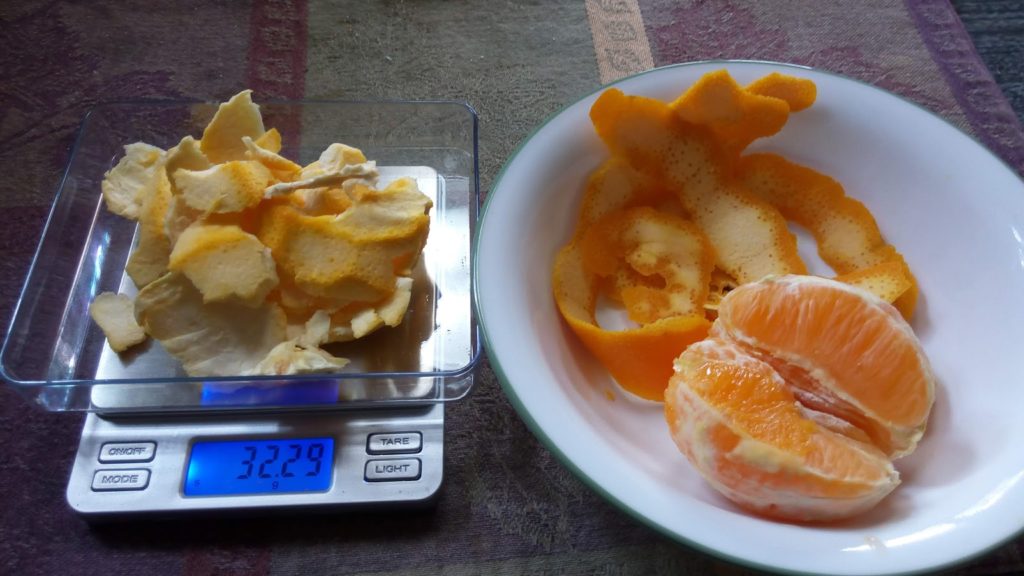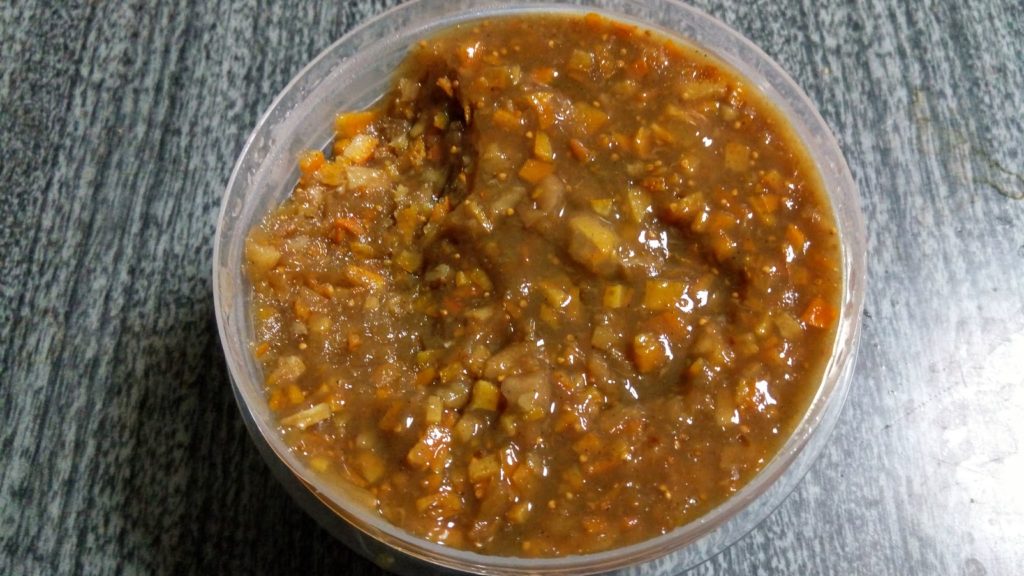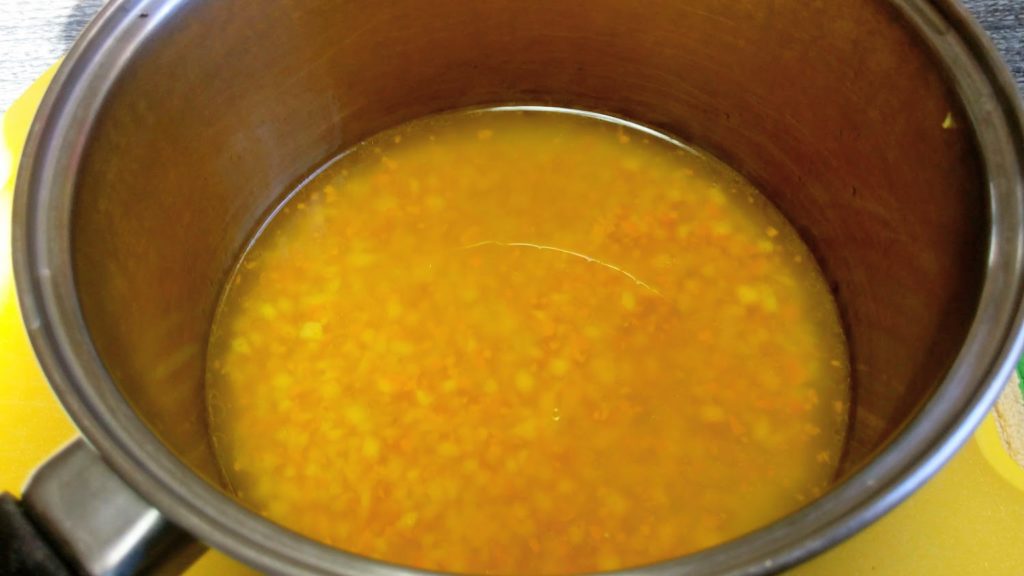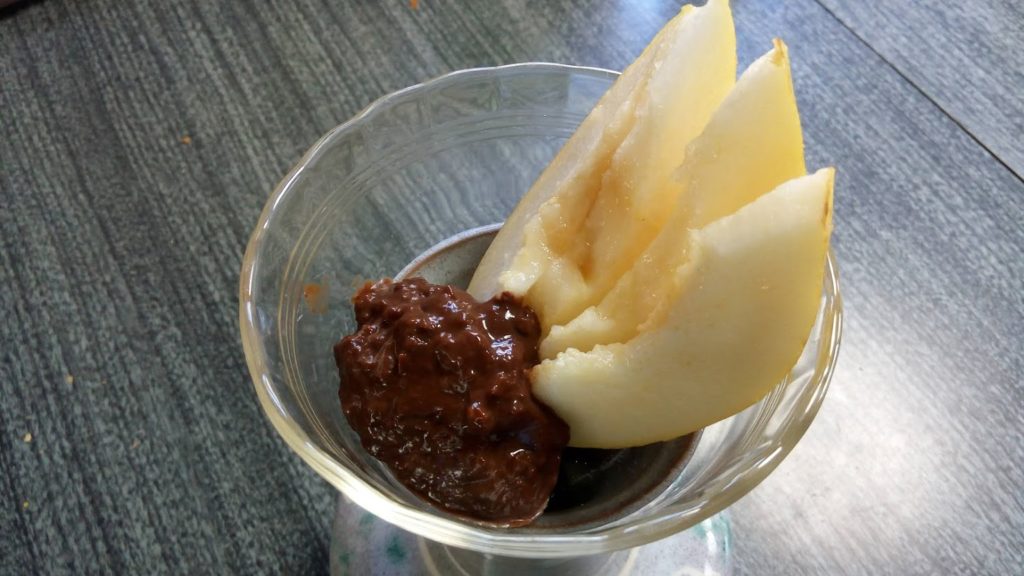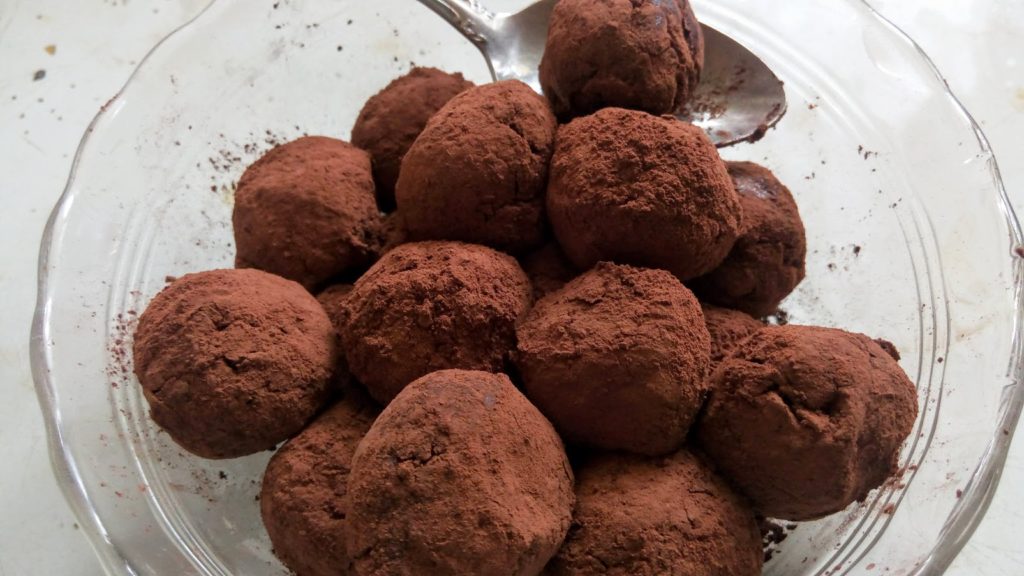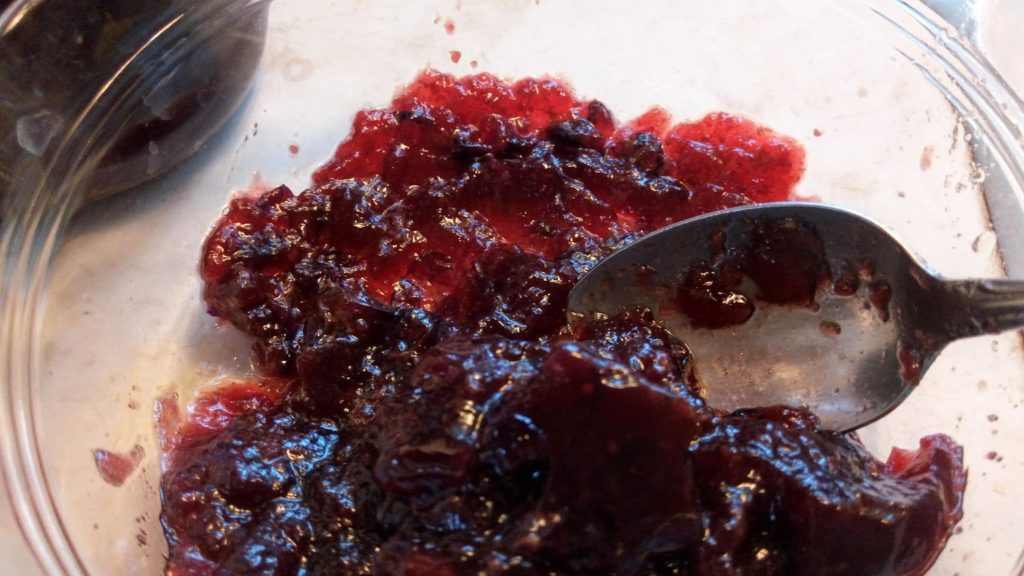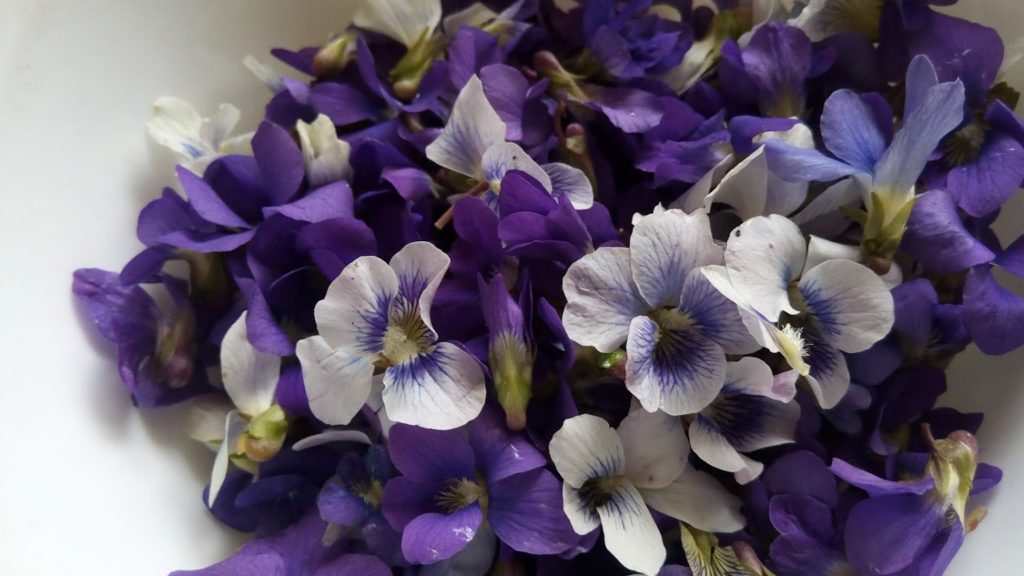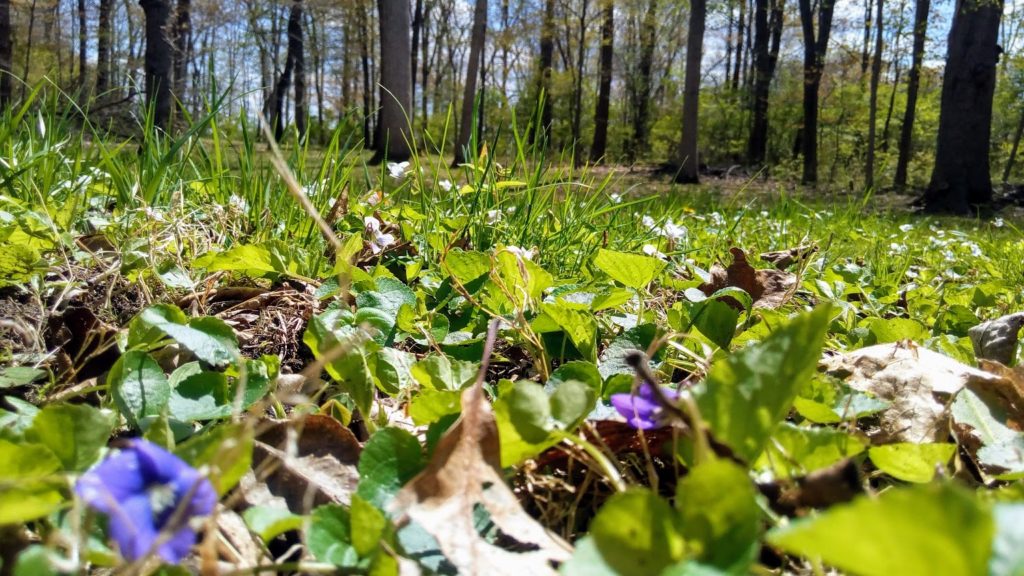Glyphosate is a complex topic that may affect many aspects of health other than being a cancer risk or obvious toxin in the sense of a traditional definition of an obvious poison – take cyanide and you die. If we have glyphosate residue in food and also in the air (5) then it may be affecting our health in many unknown ways. (16)
*This post is also available as a tabbed document, 12 pages (longer now, I added to the document), your liver is worth it though – I encourage you to read it. Here are the summary points, included again at the end:
Take home point for severe – COVID-19 patients:
- Consider testing the urine output for presences of glyphosate residue, test kits can be ordered by clinicians or through a health company, example (greatplains.mymedlab.com/great-plains-tests/glyphosate–2);
- and if it is present in excess consider adding a heme-oxygenase-1 inhibitor to their care: Heme oxygenase-1 (HO-1) inhibitors include metalloporphyrins (Mps) and imidazole dioxolane derivatives, (13);
- in addition to following some of the other tips for helping reduce intake of more glyphosate and providing extra methylation support and di-methyl glycine.
- This post got long so I’m copying the section of possible aids if excessive glyphosate is a concern: Curcumin, Garlic (source of sulfur containing phytonutrients), Vitamin C, Probiotics (fermented foods, yogurt, live active culture pickles), Methyl tetrahydrofolate – (this is the bioactive form of folic acid), Cobalamin – methyl B12, Glutathione (GSH) (an antioxidant that we make for ourselves when healthy, NAC, N-acetyl-cysteine is a precursor, or liposomal glutathione can be better absorbed. Glutathione is typically broken down in the intestines otherwise. Alpha lipoic acid and Superoxide dismutases (SODs) are additional antioxidant support for the body. (26)), Taurine (another amino acid), Epsom salt baths, source of magnesium and sulfate., Manganese containing foods, Eat organically grown foods when possible. (9)
- Those tips were collected prior to COVID-19 and the theory of heme-oxygenase-1 potentially being defective and acting as an inflammatory peroxidase instead. The garlic, and sulforaphane containing produce can act as Nrf2 promoters which might also lead to increased heme-oxygenase-1 which in normal function acts as an anti-inflammatory enzyme. The citrus and pomegranate polyphenols might also increase Nrf2 and heme-oxygenase-1 production. >>> test urine for glyphosate seems like an essential first step before proceeding with other standard anti-inflammatory treatments other than vitamin C and quercetin – both of which can help reduce an overexpression of Nrf2 (which occurs in a few types of cancer). (30)
Glyphosate use has increased significantly in the last 10-15 years, & may also be in biofuel exhaust.
Glyphosate residue may be in the air we breathe due to its presence in the exhaust created from burning biofuel that had been made from crops grown with Roundup/glyphosate herbicides. (5) Glyphosate residue is found in our foods and the other inert ingredients of Roundup may help it pass through mucus membranes more easily than glyphosate would on its own, so safety testing on glyphosate may not reflect risks of the mixed herbicides like Roundup. (16) (See post, re glyphosate found in humans)
Glyphosate is a man-made chemical that has the same basic structure as an amino acid, building blocks of proteins, and it has been found to possibly be incorporated into protein structure with radioactive tracing. The other ingredients of Roundup increase bioaccumulation of glyphosate in living tissue by helping transport it into tissue. (7) Glyphosate has been found in all vaccine samples that were tested by an independent group, (8), which might be due to vaccine ingredients being cultured on gelatin plates. Gelatin is an animal byproduct derived from collagen.
Glyphosate is a man-made amino acid similar to the natural amino acid Glycine, but has an extra side-chain.
Whether glyphosate is entering our bodies in foods or in the air we breathe, it may be incorporated into our own protein structures. Glyphosate is very similar to the amino acid glycine. An example of glycine’s importance is its role in forming collagen (25% glycine by weight, 1) which is used to form cushioning areas around joints (patients with osteoarthritis have less glycine, and less collagen in their joint tissue than during normal health, 1 ). Glycine is also used in other proteins like enzymes that are used in chemical reactions that lead to other effects on our health.
Glyphosate is similar to a natural, smaller amino acid called glycine but it has a different and larger side chain – a chemical group attached to the glycine like amino acid form. Glycine as a free amino acid has calming, inhibitory effects within the brain and has a small methyl group which can be used to stabilize genes in an ‘off’ mode. (16) Within longer protein structure glycine has an important role in the folding and formation of enzymes or receptors.
Proteins are a string of amino acids joined one to one like beads on a necklace but which then may fold into very complex shapes: Slightly like this toy. The side group on glyphosate is large enough and positioned in a way that it can change the shape and possibly the function of a protein that is made with it instead of glycine. The protein may fold correctly but then the additional chemical group is in the way where the smaller glycine may have left an opening which would be an active spot for a chemical enzyme or receptor – picture a puzzle piece that now has a sticking outward spot instead of an open area.

A chemical enzyme or receptor has an open area that a matching chemical can fit into. The extra molecular group on glyphosate can interfere with the opening that a smaller glycine would have created in a folded protein. If glycine is being incorporated into protein structure, feasibly it might change the function of an enzyme that included glycine at an active site – changing the shape of the puzzle piece so that it was inactive, the opening too small to accept the normal ligand – matching chemical; or it might change the opening to fit a different chemical potentially changing the function of the enzyme.
Glycine also has a role in cancer prevention because it can donate a methyl group, which is protective against cancer by limiting genes from becoming active if they are not supposed to active. Epigenetic changes can occur in the methylation of genes that don’t change the DNA structure itself but which can be passed from mother to developing fetus and if female, to the fetal ovum – the potential grandchildren. Glyphosate has been found to cause “epigenetic changes through endocrine-mediated mechanisms [54, 73, 75, 76, 79, 81, 83].” (16)
The extra molecular group in glyphosate is not a methyl donor and therefore would not help preserve necessary methylation of genes that are meant to be in the methylated inactive ‘off’ mode. (9) Unmethylated genes are available to be made into proteins – and we might not want some cells to be making some proteins – cancer cells tend to grow out of control and produce more blood vessels than normal – necessary to support the uncontrolled growth of a tumor.
The glyphosate residue problem of accumulation in our bodies would not be able to be reduced quickly, but might be reduced gradually by avoiding any food that might have Roundup in the production/feed chain, and providing extra glycine as a supplement – to help the body build new collagen and other proteins with the correct amino acid. Some tips that may help reduce glyphosate are included in this post, based on a video by researcher Stephanie Seneff, and which include strategies that were used to treat herd animals who ingested excess glyphosate. A functional medical health professional might be able to provide individualized guidance. (9)
Excerpt describing how replacement of glycine with a different amino acid can change an enzyme from beneficial to harmful: “The title of a paper published in 2000 clearly states the consequences of replacing the first glycine residue with a different amino acid: Replacement of the distal glycine 139 transforms human heme oxygenase-1 into a peroxidase.”46 The researchers replaced the first glycine residue with several different amino acids, but the one that caused the worst disruption was aspartate. Aspartate is a very good model for how glyphosate would behave because, like glyphosate, it is considerably larger than glycine & negatively charged. Turning the molecule into a peroxidase would result in the release of redox-active ferryl iron (Fe(IV)), a highly oxidized & very dangerous form of iron. 47” – Stephanie Seneff (5)
The change in the enzyme example, heme oxygenase-1 (HO-1) would cause a positive feedback loop – inflammatory chemicals would cause an increase in production of the HO-1 enzyme, which normally would be protective as it is anti-inflammatory, but a switch to it being a peroxidase, the defective theoretically glyphosate or aspartate containing enzyme would instead further increase inflammation which would lead to the positive feedback loop of an increase in production of the normally anti-inflammatory enzyme, which if defective, would again increase inflammation instead, signally further increased production of the potentially defective enzyme, etcetera, creating an out of control increasingly inflammatory condition.
The bad news – this might be why some people are having severe COVID-19 conditions with blood clotting and other circulatory problems and severe inflammation. The good news – there are known heme oxygenase-1 inhibitors used for research purposes and a few types of cancer that have developed ways to use the enzyme.
Heme oxygenase-1 (HO-1) inhibitors include metalloporphyrins (Mps) and imidazole dioxolane derivatives, (13) :
“Historically, the first molecules used as non selective HO-1 inhibitors were metalloporphyrins (Mps). The subsequent development of the imidazole-dioxolane derivatives afforded the 1st generation of non-porphyrin based, isozyme selective HO-1 inhibitors.” (13)
Typically anti-inflammatory phytonutrients, such as carnasol (12) found in rosemary and sage which increase the anti-inflammatory Nrf2 pathway, might not be as helpful for a patient whose problem involved glyphosate residue and defective heme oxygenase-1 (HO-1). The normally anti-inflammatory HO-1 enzyme is also increased, induced, by the promotion of the Nrf2 anti-inflammatory pathway, (See excerpt: 10) in addition to being increased by an increase in levels of inflammatory chemicals.
“Our results showed that hesperetin and gardenin A dramatically suppressed ROS and IL-5 production through distinct pathways. Interestingly, hesperidin induced HO-1 expression through the transcription factor Nrf2 coupled with the PI3K/AKT or ERK/JNK signaling pathway, consequently downregulating NFAT activity and IL-5 secretion. Likewise, gardenin A induced HO-1 expression and subsequently suppressed IL-5 production by reducing NFAT activity and upregulating PPARγ in EL-4 cells, suggesting that inducing HO-1 expression may inhibit asthmatic inflammation. Altogether, hesperidin and gardenin A have great potential for regulating the asthma-associated immune responses through antioxidant properties.” (10)
Clearly more research is needed regarding the role of glyphosate in severe Covid-19 illness. My own successful use of citrus peel flavonoids such as hesperetin for helping the asthma like symptoms of Covid-19 like illness was early in the progression of the illness and I have been avoiding glyphosate containing foods for several years, as well as taking a few grams of supplemental Di-methyl glycine daily during that same time period. Citrus flavonoids have been found beneficial for asthma and some other types of respiratory problems due to activating bitter taste receptors within the lungs. (11)
How to tell if Glyphosate is a problem for a patient? test the urine for residue is one method used in a fatty liver disease study.
Glyphosate animal studies tended to have liver damage as a risk so a research team tested a small group of humans with early stages of liver damage and a group without for the presence of glyphosate in their urine. the people with liver disease (Non-alcoholic Fatty Liver Disease, NAFLD) were found more likely to have higher levels of glyphosate being excreted in their urine samples than the people without liver damage. (19, 20) Test kits for the presence of glyphosate in a urine sample can be ordered by clinicians or through a health company, example: (greatplains.mymedlab.com/great-plains-tests/glyphosate–2)
Non-alcoholic Fatty Liver Disease has become much more common in the last couple decades in the United States and other areas.
Having liver disease whether NAFLD, or more advanced stages, is associated with increased risk for more severe COVID-19 illness. (many search results, COVID19/NAFLD) Having more severe COVID-19 illness may also increase risk for being left with liver damage in survivors. (23)
High fructose corn syrup sweetened products may be part of risk. Fructose is a sugar that is not used by the body for energy except within the liver, similar to calories from alcohol. An excessive intake of calories from alcohol or fruit sugar on a regular basis can then lead to more energy than the liver needs on a daily basis and the excess is made into fat and stored within the liver. If the problem continues, excess fruit sugar or alcohol, than more fat is made and added to the liver storage and the stored fat isn’t used. The liver is not designed to store extra fat. The area become inflamed which leads to fibrosis, scar tissue, and eventually cell death. The liver is where toxins are detoxified and removed from circulation so a non-working liver then leads to an excess of toxins in the blood, and jaundice may become visible as yellowing of the whites of the eyes.
More information about the progression of liver disease is available at the Liver Foundation website: (21).
Limiting fruit sugar and alcohol intake to a moderate one or two servings per day or less is the obvious solution to preventing Non-alcoholic Fatty Liver Disease from occurring. This may not be as obvious as it seems regarding High-Fructose Corn Syrup – which is now being used to sweeten soda and other beverages. Twenty ounce fructose sweetened anything might be four fruit serving equivalents, but without providing the beneficial phytonutrients or fiber of a whole fruit. Anti-inflammatory phytonutrients such as anthocyanins from blueberries, and other red/purple fruits and produce may be protective as well. (many anthocyanin/NAFLD studies) Avoiding glyphosate may also be necessary. (19, 20)
The issue of NAFLD is very significant because if not corrected early, in the fatty stages when the extra energy could be used by the liver, it progresses to the fibrotic scarring and cell death stages, which are generally non-reversible and liver transplant is needed. Treatment during the fibrotic stage may be possible, early diagnosis can help prevent a need for liver transplant, if lifestyle changes and treatment is followed. Non-alcoholic Fatty Liver Disease is being diagnosed in people as young as age 15 more commonly now in the U.S.. Fatty Liver Disease used to be a disease linked to decades of drinking too much alcohol – in older people. There are waiting lists for organ transplant – ideally, better to take care of your own liver.
Progression between the stages was thought to generally take a couple decades – age 15, would be possibly needing a liver transplant by age 35, however that no longer seems to be true either. Some patients are reaching the more severe liver disease within just a couple years from initial diagnosis of NAFLD. Other risk factors for NAFLD include “obesity, type 2 diabetes, hypertension, and hyperlipidemia,” also “obstructive sleep apnea, polycystic ovary syndrome, gout, and hypothyroidism.” (22) If glyphosate is part of the risk, than the 15 year old could have been consuming glyphosate residue for 15 years.
If glyphosate is interfering with re-methylation, that also could be a risk factor for risk of developing NAFLD: “In summary, advanced NAFLD is associated with multiple alterations in methionine metabolism that lead to hepatic methionine deficiency and homocysteine elevation, mainly as a result of impaired remethylation of homocysteine to methionine.” (24) Methionine is also an amino acid like glycine that can be a methyl donor – when it has a methyl group available to donate.
Dietary nutrients or phytonutrients mentioned by Stephanie Seneff in a video about glyphosate, and reducing negative impact of it include:
- Curcumin
- Garlic (source of sulfur containing phytonutrients)
- Vitamin C
- Probiotics (fermented foods, yogurt, live active culture pickles)
- Methyl tetrahydrofolate – (this is the bioactive form of folic acid)
- Cobalamin – methyl B12
- Glutathione (GSH) (an antioxidant that we make for ourselves when healthy, NAC, N-acetyl-cysteine is a precursor, or liposomal glutathione can be better absorbed. Glutathione is typically broken down in the intestines otherwise. Alpha lipoic acid and Superoxide dismutases (SODs) are additional antioxidant support for the body. (26))
- Taurine (another amino acid)
- Epsom salt baths, source of magnesium and sulfate.
- Manganese containing foods,
- Eat organically grown foods when possible.
- (9)
Toxicity risk is assessed based on old standards of overt lethality, cancer risk, and teratogen – birth defect risk.
Toxicity risk for new chemicals still focuses on the overt risk of how much is too much – how much will cause cancer, visible or otherwise obvious birth defects, or will lead to death within a short time span? Toxicity risk would not be checking whether the function of normal enzymes still worked, or whether collagen was still being made in the same way.
Modern man-made chemicals may be affecting health in less obvious ways. Endocrine disrupting chemicals have been studied more extensively than the question of the similarity of glycine and glyphosate. Endocrine disrupting chemicals can affect the balance of female/male hormones and possibly affect development of infants during a woman’s pregnancy and may be affecting health throughout the lifespan in other ways – at very low doses. Hormones affect the body in very tiny amounts – not at amounts that would cause cancer or lead to death in a short amount of time. Glyphosate containing herbicides have been found to have androgen like effects, male hormone, and effects on reproductive health. (3, 4)
Many modern chemicals commonly used for agriculture and other purposes are negatively impacting soil health. We not only are losing bees from the wilderness and agriculture, we have lost earthworms from the soil. (25)
Glyphosate in biofuel & rates of severe Covid-19 illness.
Severe Covid-19 illness has had many odd symptoms that are not like other respiratory illnesses. The use of glyphosate herbicides for food and biofuel production in the US and in some other nations has greatly increased in the last decade or two. (16) SARS-CoV-1 was a smaller outbreak and it occurred in 2003. “Two-thirds of the total volume of glyphosate applied in the U.S. from 1974 to 2014 has been sprayed in just the last 10 years.” (16)
Use of glyphosate herbicides has also increased significantly due to use as a desiccant in the final ripening stages of other crops such as small grains, edible beans, and other crops. The herbicide is added in the last few days before harvest to defoliate the plant and increase harvest yield. It also may greatly increase residue on the harvested food.
“The average rate per crop year [US]—the single most important indicator of the intensity of glyphosate use—rose even more dramatically, from 0.47 kg/hectare in 1993 to 2.08 kg/hectare in 2012 (4.4-fold).” (16)
Initially application of the herbicide for genetically modified crops (GMO) was once or twice per growing season but there was an increase in weeds that mutated to be able to resist glyphosate and then more of the herbicide and other herbicides were needed – and this losing race against mutations in weeds is continuing. (16, 32) The method to make genetically modified crops leads to an increased risk for similar mutations as the genes involved are added to the crop plant in a mobile gene containing plasmid – likely then fairly mobile for moving into a nearby weed species. (17)
As use of glyphosate herbicides has increased in the US and residue has increased the Environmental Protection Agency has increased the amount of residue allowed to be present on the harvested product. (16)
“Still, a growing body of literature points to possible, adverse environmental, ecological, and human health consequences following exposure to glyphosate and/or AMPA, both alone [54] and in combination with ingestion of GE proteins (e.g., EPSPS, Bt endotoxins) [55]. Environmental studies encompass possible glyphosate impacts on soil microbial communities and earthworms [56–58], monarch butterflies [59], crustaceans [60], and honeybees [61].
(Benbrook, 2016, 16)
Studies assessing possible risks to vertebrates and humans include evidence of rising residue levels in soybeans [62, 63], cancer risk [64], and risk of a variety of other potential adverse impacts on development, the liver or kidney, or metabolic processes [54, 55, 65–80].”
(Benbrook, 2016, 16)
The patent for glyphosate herbicides ended in the year 2000 and has reduced price and increased the number of producers. Chinese producers now make about 40% of the world supply of glyphosate herbicides but primarily export it rather than it being used in China on crops there as the genetically modified seeds resistant to glyphosate are not generally grown there. (16)
It is easier to pollute than it is to clean up pollution. Lead gasoline exhaust harmed health and was eventually regulated to be prevented from being added to gasoline. Urban areas still have lead contaminated soil around highways and industrial areas. Lead exposure may have added to an increase in a variety of health and social issues.
Glyphosate may be present in biofuel made from plant material that was grown with Roundup or other glyphosate containing herbicides or biomatter that was exposed to glyphosate containing herbicides from it spreading to the nearby environment. It does runoff into water and collects in soil. It may be used as an herbicide for aquatic plants but it is not ideal for that use as aquatic species are even more at risk to be harmed by the combination of the glyphosate and other ingredients that can carry it through mucus membranes more easily.
Removing glyphosate residue from the biofuel produced with glyphosate containing plant material might be possible – but ending use of glyphosate herbicides for all of our agricultural crops and other environmental uses might be better for long term health of soil microbes, aquatic species, and other species, such as humans.
Graphic showing rates of COVID19 by city/county in the state of Massachusetts – April 27 2020. The rate for Chelsea, Massachusetts is the worst for the state at that point in time (6) – what might be different there? – they have a biodiesel production plant. More recent graphic showing the U.S. rate of COVID-19 cases and deaths: (18), this is not contained.
If biofuel production and its use, due to exhaust containing glyphosate residue, is part of the severe Covid19 risk – then US and Brazil are by and far leaders in production of biofuel, (14) , and US crops use a lot of Roundup. (14) I’m not sure about Brazil Roundup use prior to 2018 but at that time the nation suspended use, pending further safety studies of glyphosate containing herbicides, and then the ban was over-ruled by a higher level court, citing risk to the Brazilian economy as soy growers depend on glyphosate herbicides. (15)
The death rate in Brazil since the start of Covid19 epidemic to present – seasonality may also play a role was less severe than in the U.S.. Vitamin D/sunshine is protective against an excess inflammatory response. Brazil’s Covid rate has been increasing with a current rate of 25153 cases per million population, 7.5% are being treated, and 0.2% are in Intensive Care Units (ICU): (coronatracker/Brazil) The United States Covid rate has also been increasing with a rate of 26582 cases per million population, 32.3% are being treated, and 0.2% are in ICU: (coronatracker/United-States). Data accessed on Oct. 24, 2020, coronatracker.
China, for comparison, a country mentioned earlier that doesn’t use much glyphosate herbicides has only 60 cases per million population currently. (coronatracker/China). Data accessed on Oct. 25, 2020. Less glyphosate is also used in European countries than in the United States. (31)
Non-Hodgkin’s Lymphoma has been linked to Roundup use, and some nations have banned, or plan a phaseout and eventual ban of the use of glyphosate herbicides within a few years. A list of cities, states, and nations with some regulations or ban of the use of glyphosate containing herbicides is available here: (carlsonattorneys). A list of nations with a ban or planned ban is available here: (sustainablepulse). The herbicide has also been linked to bee colony collapse (death of agricultural and wild bee colonies) along with a few other pesticides/herbicides.
aside/ burning plant material that could be composted as used as fertilizer is still removing phosphorus from the growth renewable cycle that was traditional and worked. Biofuel also somewhat energy intensive to make. Humans need to burn less, not just switch what we are burning
Possible aid in urban areas – Pomegranate
Pomegranate juice and nutrients in the peel of pomegranate may help the body remove air pollution nanoparticles by promoting clumping of the tiny particles into a cluster large enough for the white blood cells of our normal body defense system to be able remove, and also helps reduce oxidative stress – inflammatory chemicals. Glutathione, an antioxidant mentioned earlier, is one of our body’s ways of reducing oxidative stress chemicals. “even very low amounts of pomegranate juice…protects the generated nitric oxide (NO) against its oxidative destruction (via an inhibition of a superoxide anion-mediated disappearance of NO, leading to..[more].. bioavailability of NO) (29)
Some background info on glyphosate theory regarding chronic illness risk
Glyphosate, pathways to modern diseases II: Celiac sprue and gluten intolerance – Samsel & Seneff (27)
More on this topic is in the tabbed document.
Different ‘hyperinflammatory’ explanation for COVID-19, and summary points about glyphosate/CoV theory:
A potential explanation for the hyperinflammatory (like toxic shock/septic shock) syndrome in severe COVID19 and MIS-C in children in a small percentage may be due to a genetic susceptibility. More positively T-cell immunity from exposure to over coronavirus may be protective. (28)
Use of anti-inflammatories is suggested as a possible solution for the hyperinflammatory reaction, (28), – which is what high dose Intravenous Vitamin C Infusion proponents have been using and recommending all along. (March 26, 2020 post) Just taking very large doses of vitamin C would not be the same, it goes straight through if taken in excess by mouth. Liposomal forms of vitamins are encased in a fat soluble carrier which can increase absorption more. However – if excessive glyphosate residue is part of the hyper-inflammatory cycle, with the defective heme oxygenase-1 enzyme instead of being anti-inflammatory and instead acting as an inflammatory peroxidase, then standard anti-inflammatory treatment may not help as much as expected and some may even be adding to the problem by inducing more production of the defective heme-oxygenase-1 enzyme.
Take home point for severe – COVID-19 patients:
- Consider testing the urine output for presences of glyphosate residue, test kits can be ordered by clinicians or through a health company, example (greatplains.mymedlab.com/great-plains-tests/glyphosate–2) ;
- and if it is present in excess consider adding a heme-oxygenase-1 inhibitor to their care: Heme oxygenase-1 (HO-1) inhibitors include metalloporphyrins (Mps) and imidazole dioxolane derivatives, (13);
- in addition to following some of the other tips for helping reduce intake of more glyphosate and providing extra methylation support and di-methyl glycine.
- This post got long so I’m copying the section of possible aids if excessive glyphosate is a concern: Curcumin, Garlic (source of sulfur containing phytonutrients), Vitamin C, Probiotics (fermented foods, yogurt, live active culture pickles), Methyl tetrahydrofolate – (this is the bioactive form of folic acid), Cobalamin – methyl B12, Glutathione (GSH) (an antioxidant that we make for ourselves when healthy, NAC, N-acetyl-cysteine is a precursor, or liposomal glutathione can be better absorbed. Glutathione is typically broken down in the intestines otherwise. Alpha lipoic acid and Superoxide dismutases (SODs) are additional antioxidant support for the body. (26)), Taurine (another amino acid), Epsom salt baths, source of magnesium and sulfate., Manganese containing foods, Eat organically grown foods when possible. (9)
- Those tips were collected prior to COVID-19 and the theory of heme-oxygenase-1 potentially being defective and acting as an inflammatory peroxidase instead. The garlic, and sulforaphane containing produce can act as Nrf2 promoters which might also lead to increased heme-oxygenase-1 which in normal function acts as an anti-inflammatory enzyme. The citrus and pomegranate polyphenols might also increase Nrf2 and heme-oxygenase-1 production. >>> test urine for glyphosate seems like an essential first step before proceeding with other standard anti-inflammatory treatments other than vitamin C and quercetin – both of which can help reduce an overexpression of Nrf2 (which occurs in a few types of cancer). (30)
Your liver may thank you for thinking about the risks of glyphosate to human health, and to the other species we share the planet with. Humans created a fake amino acid – which can be incorporated into protein as if it was an amino acid, but which functions far differently within the protein structure.
Disclaimer: Opinions are my own and the information is provided for educational purposes within the guidelines of fair use. While I am a Registered Dietitian this information is not intended to provide individual health guidance. Please see a health professional for individual health care purposes.
Reference List
- de Paz-Lugo P, Lupiáñez JA, Meléndez-Hevia E. High glycine concentration increases collagen synthesis by articular chondrocytes in vitro: acute glycine deficiency could be an important cause of osteoarthritis. Amino Acids. 2018;50(10):1357-1365. doi:10.1007/s00726-018-2611-x https://www.ncbi.nlm.nih.gov/pmc/articles/PMC6153947/
- The Herbicide Roundup found more dangerous than Glyphosate alone. Oct 17, 2016, effectiveselfcare.info, https://effectiveselfcare.info/2016/10/17/the-herbicide-round-up-found-more-dangerous-than-glyphosate-alone/
- The Ramazzini Institute, Global glyphosate study: Pilot phase shows reproductive and developmental effects at safe dose. https://glyphosatestudy.org/press-release/global-glyphosate-study-pilot-phase-shows-reproductive-and-developmental-effects-at-safe-dose/
- The Ramazzini Institute, Global Glyphosate Study Pilot Phase Shows Adverse Health Effects at ‘Safe’ Doses. May 16,2018, https://glyphosatestudy.org/press-release/global-glyphosate-study-pilot-phase-shows-adverse-health-effects-at-safe-doses/
- Seneff S., Air Pollution, Biodiesel, Glyphosate and Covid-19. The Weston A. Price Foundation https://www.westonaprice.org/health-topics/air-pollution-biodiesel-glyphosate-and-covid-19/
- Tieskens KF, Celsi RJ, Confirmed Covid-19 Infection Rate per 10,000 Inhabitants (Massachusetts), updated April 27, Graphic used in Seneff S., Air Pollution, Biodiesel, Glyphosate and Covid-19. https://westonaprice.org/wp-content/uploads/Summer2020Seneff4.jpg#.X4b8zUMFK6B.link
- Contardo V, Klingelmann JE, Wiegand C. Bioaccumulation of glyphosate and its formulation Roundup Ultra in Lumbriculus variegatus and its effects on biotransformation and antioxidant enzymes. Env Pollution, 2009;157(1), Jan 2009, Pages 57-63 https://www.sciencedirect.com/science/article/abs/pii/S0269749108004053#!
- Glyphosate in Childhood Vaccines: Moms & Scientists Demand FDA & CDC Test Vaccines for Glyphosate. Moms across America, https://www.momsacrossamerica.com/glyphosate_in_childhood_vaccines
- Depew J. Glyphosate was found in vaccines; and tips for reducing dietary exposure. Sept. 16, 2016, effectiveselfcare.info https://effectiveselfcare.info/2016/09/16/glyphosate-was-found-in-vaccines-and-tips-for-reducing-dietary-exposure/
- Citrus flavonoids suppress IL-5 and ROS through distinct pathways in PMA/ionomycin-induced EL-4 cells https://pubmed.ncbi.nlm.nih.gov/31932824/
- Nayak AP, Shah SD, Michael JV, Deshpande DA. Bitter Taste Receptors for Asthma Therapeutics. Front Physiol. 2019;10:884. Published 2019 Jul 16. doi:10.3389/fphys.2019.00884 https://www.ncbi.nlm.nih.gov/pmc/articles/PMC6647873/
- Martin D, Rojo AI, Salinas M, et al., Regulation of Heme Oxygenase-1 Expression through the Phosphatidylinositol 3-Kinase/Akt Pathway and the Nrf2 Transcription Factor in Response to the Antioxidant Phytochemical Carnosol*. J Bio Chem. 2004;279:10, pp. 8919–8929, 2004 https://jbc.org/content/279/10/8919.full.pdf
- Pittalà V, Salerno L, Romeo G, Modica MN, Siracusa MA. A focus on heme oxygenase-1 (HO-1) inhibitors. Curr Med Chem. 2013;20(30):3711-32. doi: 10.2174/0929867311320300003. PMID: 23746277. https://pubmed.ncbi.nlm.nih.gov/23746277/
- Leading countries based on biofuel production in 2019 (in petajoules)*, statista.com https://statista.com/statistics/274168/biofuel-production-in-leading-countries-in-oil-equivalent/
- Reuters staff, Brazil court overturns ban on weed-killer glyphosate. Sept. 3, 2018, reuters.com, https://www.reuters.com/article/us-brazil-agriculture/brazil-court-overturns-ban-on-weed-killer-glyphosate-idUSKCN1LJ1D7
- Benbrook CM, Trends in glyphosate herbicide use in the United States and globally. Environ Sci Eur 28, 3 (2016). https://doi.org/10.1186/s12302-016-0070-0
https://enveurope.springeropen.com/articles/10.1186/s12302-016-0070-0 - Gene Transfer, Genetic Engineering of Plants: Agricultural Research Opportunities and Policy Concerns. National Research Council (US) Board on Agriculture. Washington (DC): National Academies Press (US); 1984. https://www.ncbi.nlm.nih.gov/books/NBK216398/
- Graphic showing the US rate of cases and deaths due to COVID-19. https://twitter.com/EricTopol/status/1320142330611941376?s=20
- Debra Kamin, It’s in the Weeds: Herbicide Linked to Human Liver Disease. May 14, 2019, U.C. San Diego, https://health.ucsd.edu/news/releases/Pages/2019-05-14-herbicide-linked-to-human-liver-disease.aspx
- Mills PJ, Caussy C, Loomba R., Glyphosate Excretion is Associated With Steatohepatitis and Advanced Liver Fibrosis in Patients With Fatty Liver Disease. Clin Gastroenterology and Hepatology, 2020;18:3 March 2020, Pages 741-743 https://www.sciencedirect.com/science/article/abs/pii/S1542356519303611
- The Progression of Liver Disease, liverfoundation.org, https://liverfoundation.org/for-patients/about-the-liver/the-progression-of-liver-disease/#1503432878616-a25d5b59-3a75
- Laura Joszt, NASH Has Gone Under the Radar, but It Is the “Elephant in the Room,” Panelists Say. Nov 1, 2019 https://www.ajmc.com/view/nash-has-gone-under-the-radar-but-it-is-the-elephant-in-the-room-panelists-say
- Ping Lei, Lan Zhang, Ping Han, et al., Liver injury in patients with COVID-19: clinical profiles, CT findings, the correlation of the severity with liver injury. Hepatol Int14, 733–742 (2020). https://doi.org/10.1007/s12072-020-10087-1 https://link.springer.com/article/10.1007/s12072-020-10087-1
- Pacana T, Cazanave S, Verdianelli A, et al. Dysregulated Hepatic Methionine Metabolism Drives Homocysteine Elevation in Diet-Induced Nonalcoholic Fatty Liver Disease. PLoS One. 2015;10(8):e0136822. Published 2015 Aug 31. doi:10.1371/journal.pone.0136822 https://www.ncbi.nlm.nih.gov/pmc/articles/PMC4556375/
- Prof. Dr. Ralf Otterpohl Healing the Soil, klinghardtinstitute.com, https://klinghardtinstitute.com/environment/healing-the-soil/
- Samuel Yanuck, Module 2, video 1, Hypoxia and Inflammatory Cytokines, cogenceimmunology.com https://cogenceimmunology.com/
- Samsel A, Seneff S. Glyphosate, pathways to modern diseases II: Celiac sprue and gluten intolerance. Interdiscip Toxicol. 2013 Dec;6(4):159-84. doi: 10.2478/intox-2013-0026. PMID: 24678255; PMCID: PMC3945755. https://www.ncbi.nlm.nih.gov/pmc/articles/PMC3945755/
- Superantigenic character of an insert unique to SARS-CoV-2 spike supported by skewed TCR repertoire in patients with hyperinflammation Mary Hongying Cheng, She Zhang, Rebecca A. Porritt, Magali Noval Rivas, Lisa Paschold, Edith Willscher, Mascha Binder, Moshe Arditi, Ivet Bahar Proceedings of the National Academy of Sciences Oct 2020, 117 (41) 25254-25262; DOI: 10.1073/pnas.2010722117 https://www.pnas.org/content/117/41/25254 via Tweet with graphics https://twitter.com/EricTopol/status/1310667448278945792?s=20
- Wang D, Özen C, Abu-Reidah IM, et al., Vasculoprotective Effects of Pomegranate (Punica granatum L.) Pharmacol., 24 May 2018 | https://doi.org/10.3389/fphar.2018.00544 https://www.frontiersin.org/articles/10.3389/fphar.2018.00544/full
- Mostafavi-Pour Z, Ramezani F, Keshavarzi F, Samadi N. The role of quercetin and vitamin C in Nrf2-dependent oxidative stress production in breast cancer cells. Oncol Lett. 2017;13(3):1965-1973. doi:10.3892/ol.2017.5619 https://www.ncbi.nlm.nih.gov/pmc/articles/PMC5403368/
- Antier C, Kudsk P, Reboud X, et al., Glyphosate Use in the European Agricultural Sector and a Framework for Its Further Monitoring. Sustainability, 15 July 2020 https://www.dropbox.com/s/q5ooe291m7d6inj/sustainability-12-05682-v3.pdf?dl=0
- Brunharo CACG, Morran S, Martin K, Moretti ML, Hanson BD. EPSPS duplication and mutation involved in glyphosate resistance in the allotetraploid weed species Poa annua L. Pest Manag Sci. 2019 Jun;75(6):1663-1670. doi: 10.1002/ps.5284. Epub 2019 Jan 28. PMID: 30506940. https://pubmed.ncbi.nlm.nih.gov/30506940/

